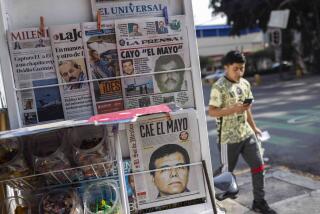Meet the Mexico City family keeping Beetlemania alive
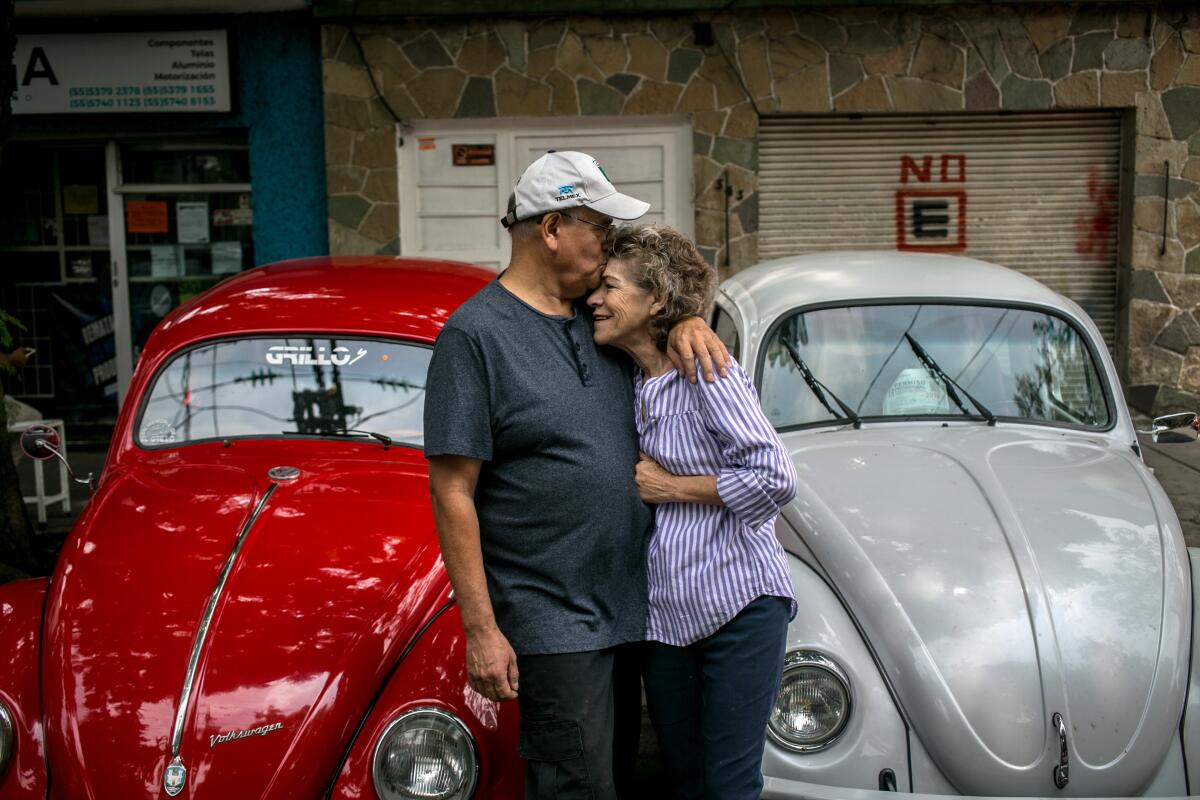
Mexico City â Jannette RamĂrez leaned against her 1965 Volkswagen Beetle, a cigarette in one hand and a racing helmet in the other.
Sixty-two years old and dressed in all black, RamĂrez flicked her butt on the ground and slid her thin frame inside the car. Her husband, 60-year-old Mario Gamboa, buckled her in.
They exchanged quick smiles as she roared off toward the starting line.
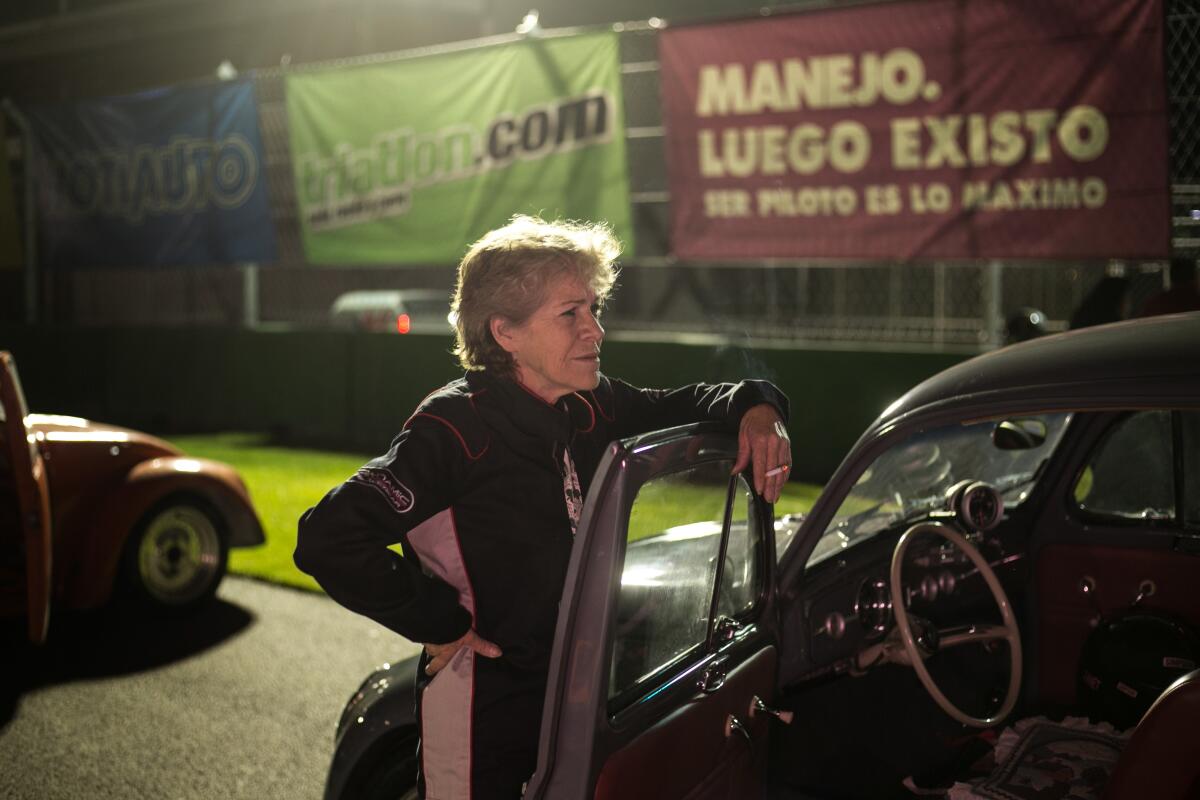
Some families bond over food, or pets. Maybe religion.
RamĂrez and Gamboa belong to a Mexico City clan that connects over cars. Specifically: VW Beetles modified with huge engines so they can race really fast.
In their world, love is expressed through gifts of custom paint jobs, premium gasoline and monogrammed gear shifts.
Gamboa and his younger brother started fixing up Beetles to compete in the 1970s, opening a popular VW mechanic shop and forming what would become an internationally known racing team.
From the very beginning, it was a family affair, with their siblings, their wives, their children and even their mother racing alongside them.
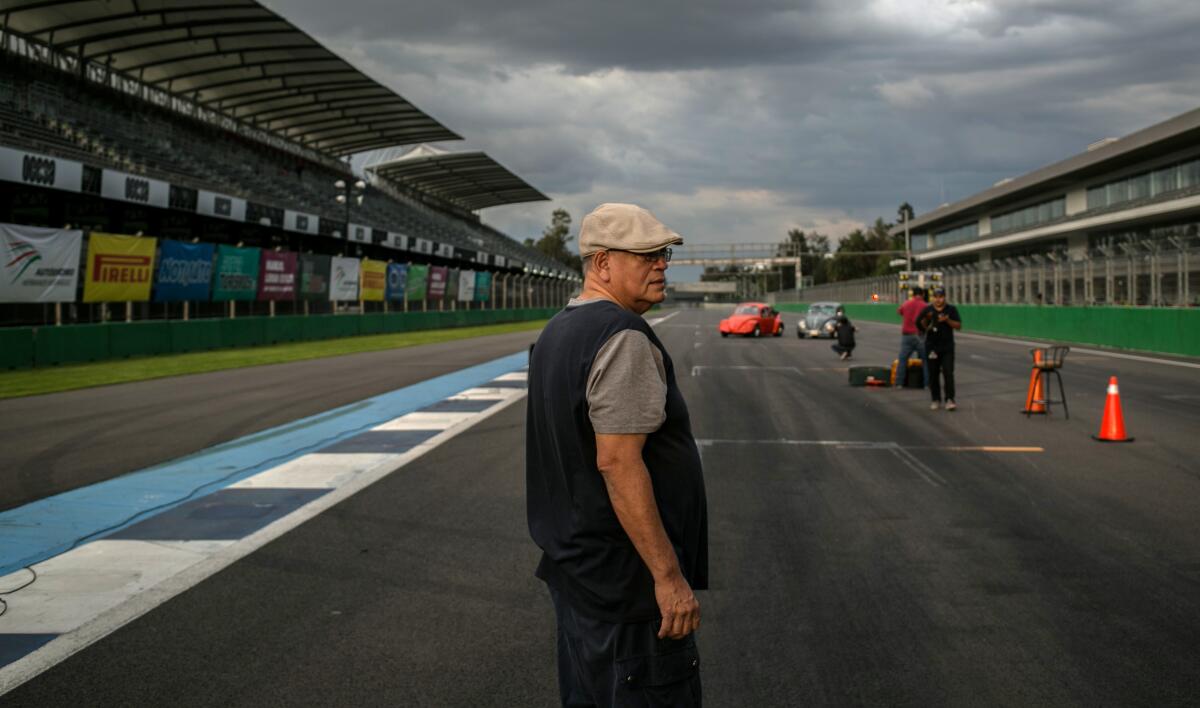
Since the late 1980s the family has organized this monthly drag race at a big track on the eastern edge of Mexico City. Vehicles of all makes and models are welcome, but the familyâs fleet of Beetles are the stars of the show.
The Gamboas live for nights like this, when the sky is clear and the crowd is cheering, and the cars blaze like shooting stars down the track under the glare of floodlights.
The truth is, the Beetle era is coming to an end. In September, the very last one â a Final Edition Beetle in stonewash blue â rolled off the assembly line at a Volkswagen plant in Puebla, about 65 miles southeast of Mexico City.
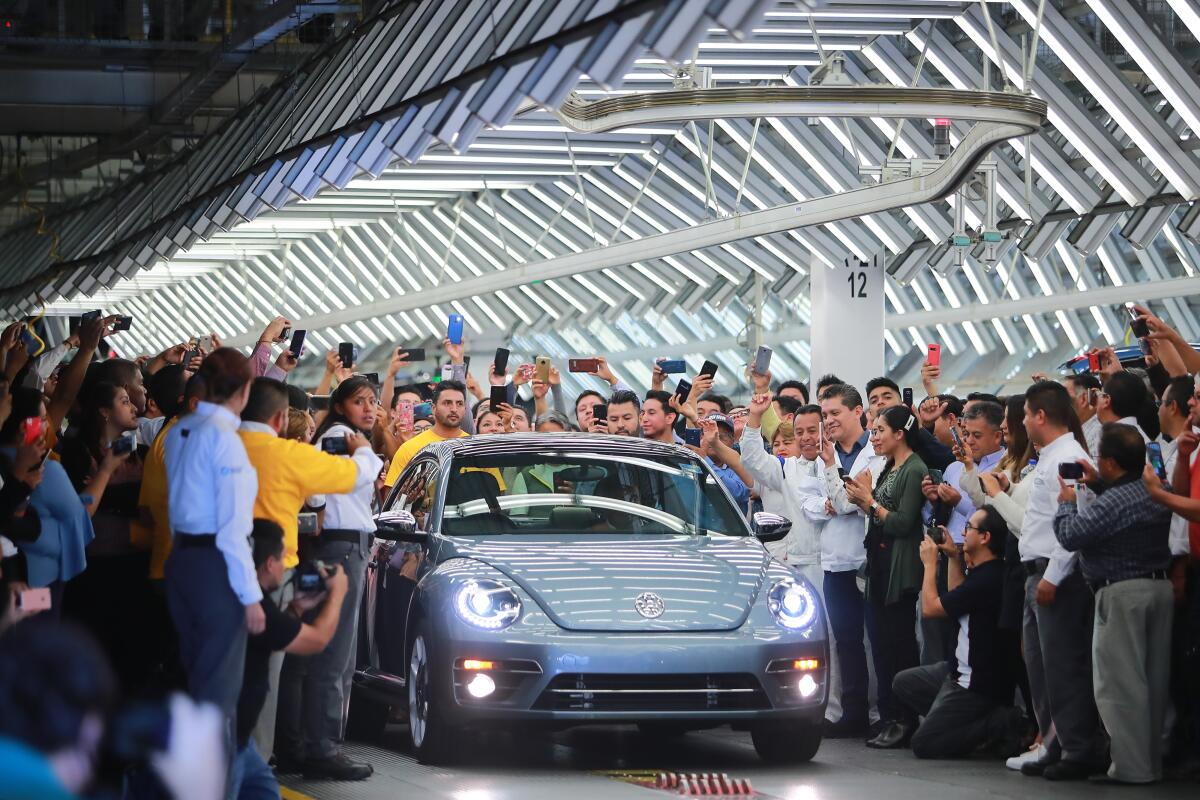
A top Volkswagen official, who said the company decided to end production of the car worldwide because of declining sales, said in a statement last year that the decision might âevoke a host of emotions from the Beetleâs many devoted fans.â
For the Gamboas, whose nostalgia for the car is part of the glue that keeps them together, it has only affirmed their mission: Do everything possible so the Beetle lives on.
::
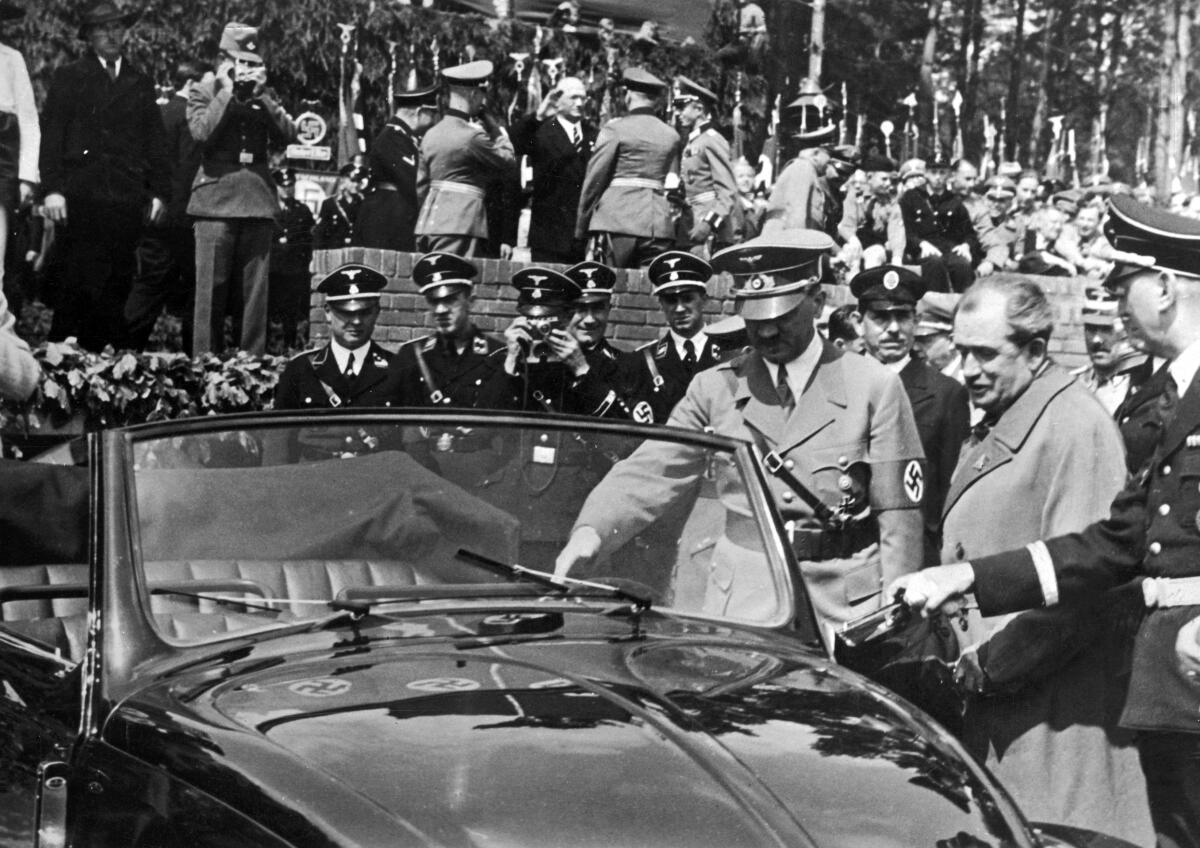
The diminutive, bubble-like Beetle was born in Germany in the 1930s, commissioned by Adolf Hitler as the âpeopleâs car.â
Cheap to buy and easy to maintain, it was an instant hit in Mexico when Volkswagen began manufacturing the car here in 1967. Within a few years, Mexicans were buying more than 50,000 annually, and had begun affectionately calling the Beetles âvochos.â
The cars became popular nationwide. In Mexico City, they were painted green and white and used as taxis, becoming as key to the capitalâs visual identity as the double-decker buses of London or the yellow cabs of New York City.
Gamboa, the oldest of four children born to a middle-class Mexico City family, was 15 when a friend gave him a book about one manâs travels in his Beetle. The book also explained the carâs simple engine, which sits not in the front of the car but in the back.
Gamboa fell in love.
That same year he fell in love with RamĂrez, who lived in an apartment complex on the tree-lined block where he had recently moved with his family.
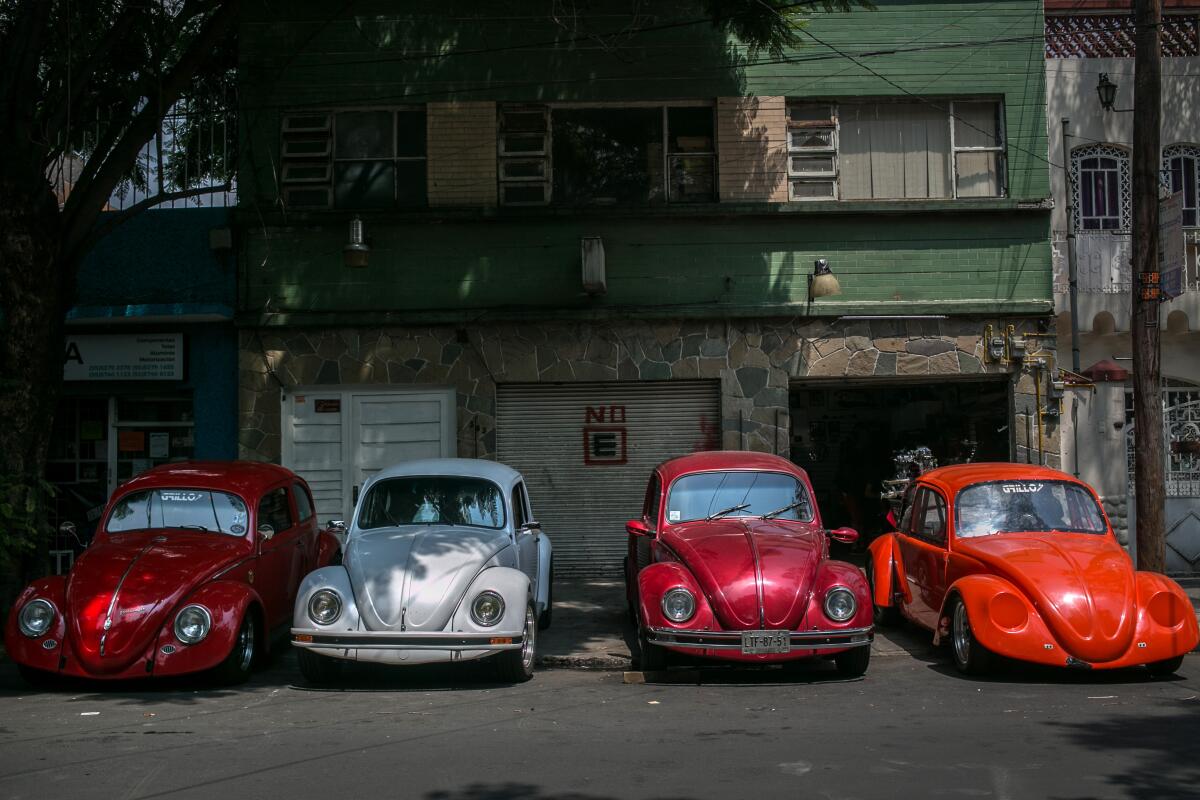
They both remember their first encounter, on the sidewalk in front of her house in the residential neighborhood of Vista Alegre. He thought she looked pretty in her sky blue slacks. She thought his motorcycle looked fun.
Just a hair over 5 feet tall, RamĂrez was a tomboy who loved to race, whether on foot, bicycle or roller skates. Soon, Gamboa was taking her for rides on his Honda and teaching her how to drive.
Adrenaline was in his familyâs DNA too.
His maternal grandfather loved to drive fast and died in a car wreck while trying to pass another vehicle on a rainy highway when Gamboa was a young boy.
Gamboaâs mother, Dulce, also had a thing for speed. She used to take Gamboa and his two brothers and sister to the racetrack on the weekends, where they would thrill at the screech of wheels, the deafening rumble of the engines and the acrid smell of burning rubber.
In 1978, Gamboa bought his first Beetle, a cherry red model of 1953 vintage.
He and RamĂrez liked to drive it up into the mountains ringing Mexico City. After they had two sons, Mario Jr. and Alex, the boys would take turns curling up for naps in the Beetleâs cocoon-like back seat.
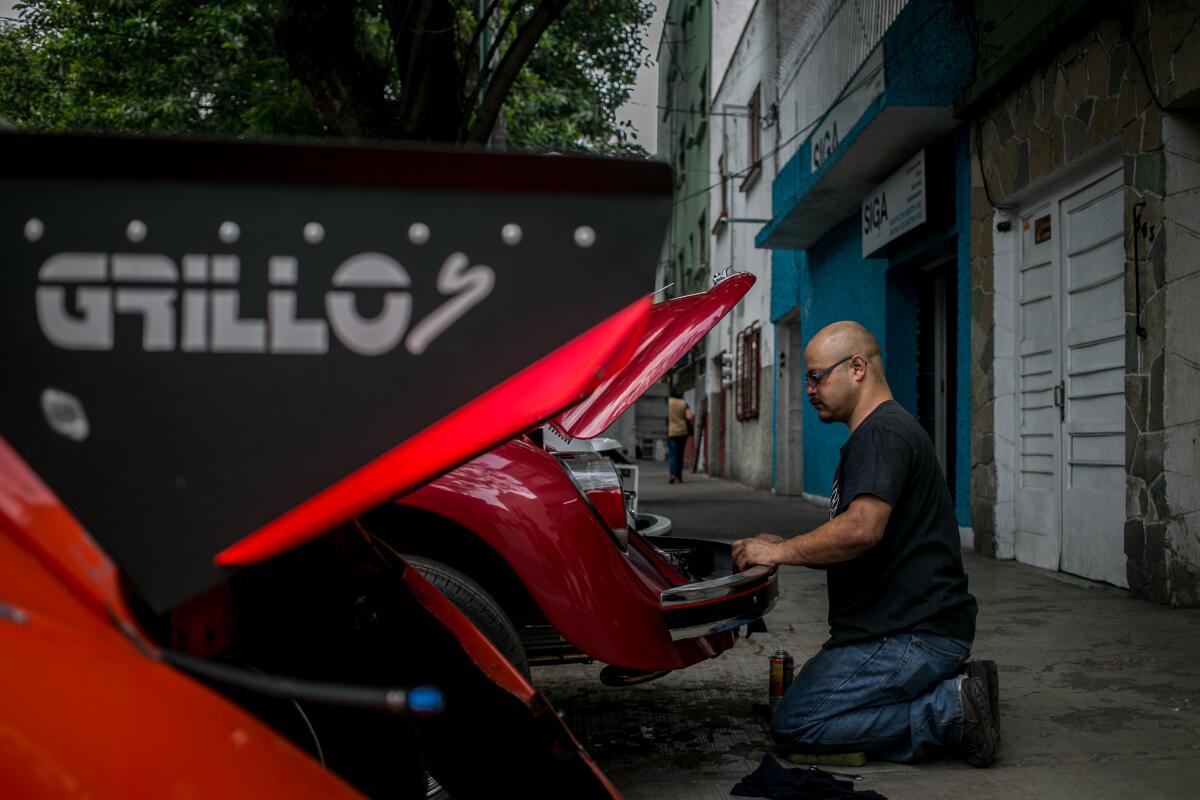
Gamboa and his brother Adiel experimented with putting different motors in the car to see which would allow it to go fastest. They lost many drag races before they started winning, but eventually they were racing the cherry red Bug all across Mexico. Several times a year they took that car and other Beetles they had modified to the United States to race there.
The Gamboas customized their cars in a style known among VW aficionados as the âCalifornia look.â Inspired by the lowriders of Los Angeles, it called for bigger-than-average wheels and for the front suspension to be lowered.
In the world of car buffs, the Gamboasâ work became legendary. A Facebook page for their racing team has more than 67,000 followers.
The Gamboas named their team and the mechanic shop Grillos Racing, after Adiel, whose nickname, Grillo, means cricket. For decades, the brothers worked together out of a big shop with several repair bays and plenty of space to display their racing trophies.
Then, in 2008, Adiel died of an aneurysm on Christmas Day. Not long after, burglars broke into the shop and stole thousands of dollarsâ worth of tools.
Heartbroken, Gamboa decided to move the shop to the family home, converting part of the first floor into a garage.
His son Mario Jr., who at 41 closely resembles his father, with a smooth head and a wide smile, became his right-hand man.
One fall evening, as the family sat around the dining room, Gamboaâs twinkly eyed mother, Dulce, gestured to the boxes of car parts stacked in a corner of the living room. âMy house has become a storage room, but at least Iâm never lonely,â she said smiling.
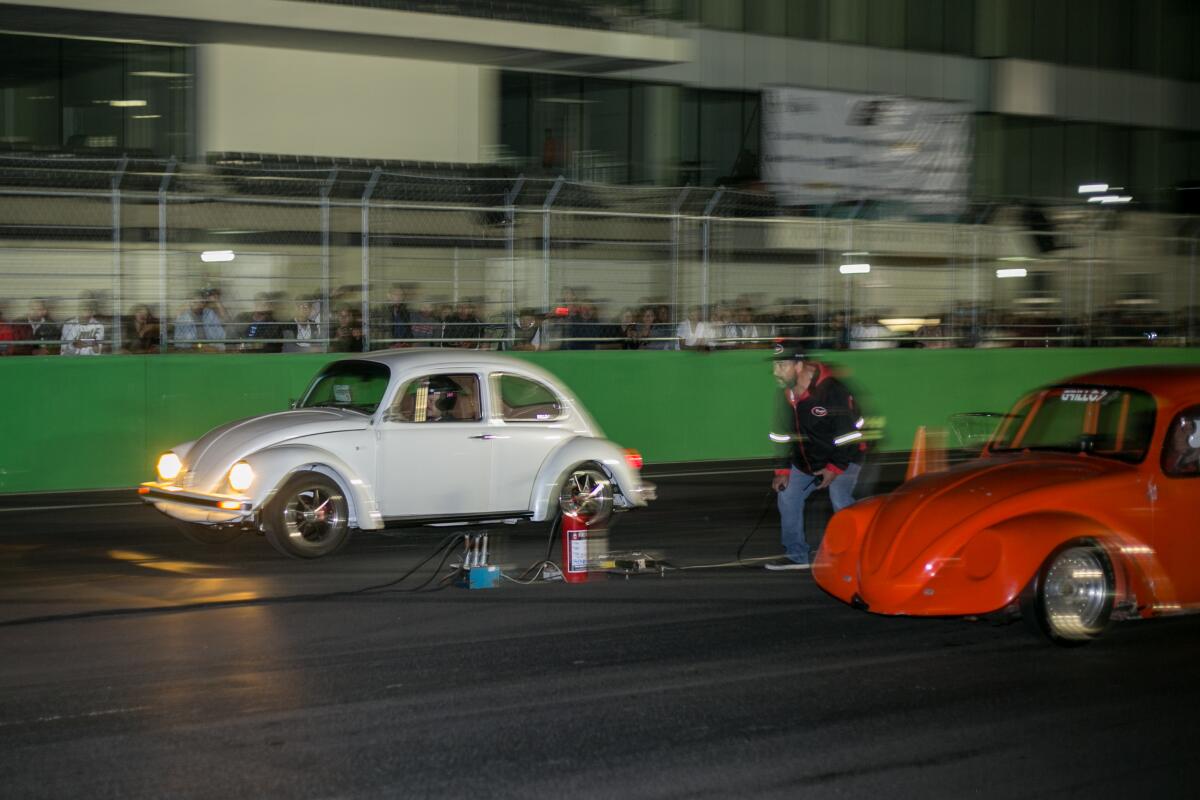
Eighty years old, she gave up driving her car â a classic Datsun â a month ago because of problems with her eyesight.
âI miss it,â she said.
She last raced five years ago, at 75. That day, she lost to Mario Jr.
âI had to stop, because what if I had beat him the next time?â she teased, as her grandson laughed and turned the slightest shade of red. âThat would have been bad, if he had lost to an old lady.â
Like her mother-in-law, RamĂrez never showed much interest in the mechanics of cars, but she liked to go fast. Even when her sons were little, she frequently drag-raced, using to her advantage the way opponents often underestimated her.
Once, in the 1990s, she raced a young man in a tricked-out Mustang down an abandoned airport landing strip. When she beat him, the driver was so embarrassed, he drove off instead of returning to the starting line.
Five years ago, after decades of racing cars that belonged to her husband or her brothers-in-law or her sons, RamĂrez wanted a vehicle of her own. So Gamboa bought her the 1965 Beetle, fixed it up and painted it slate gray.
She now calls the car âEl Grisiâ â gris is gray in Spanish â or more often: âmi bebĂŠ.â
âSome wives want trips or their kitchen remodeled,â Gamboa said. âJannette just wants nitro in her Grisi.â
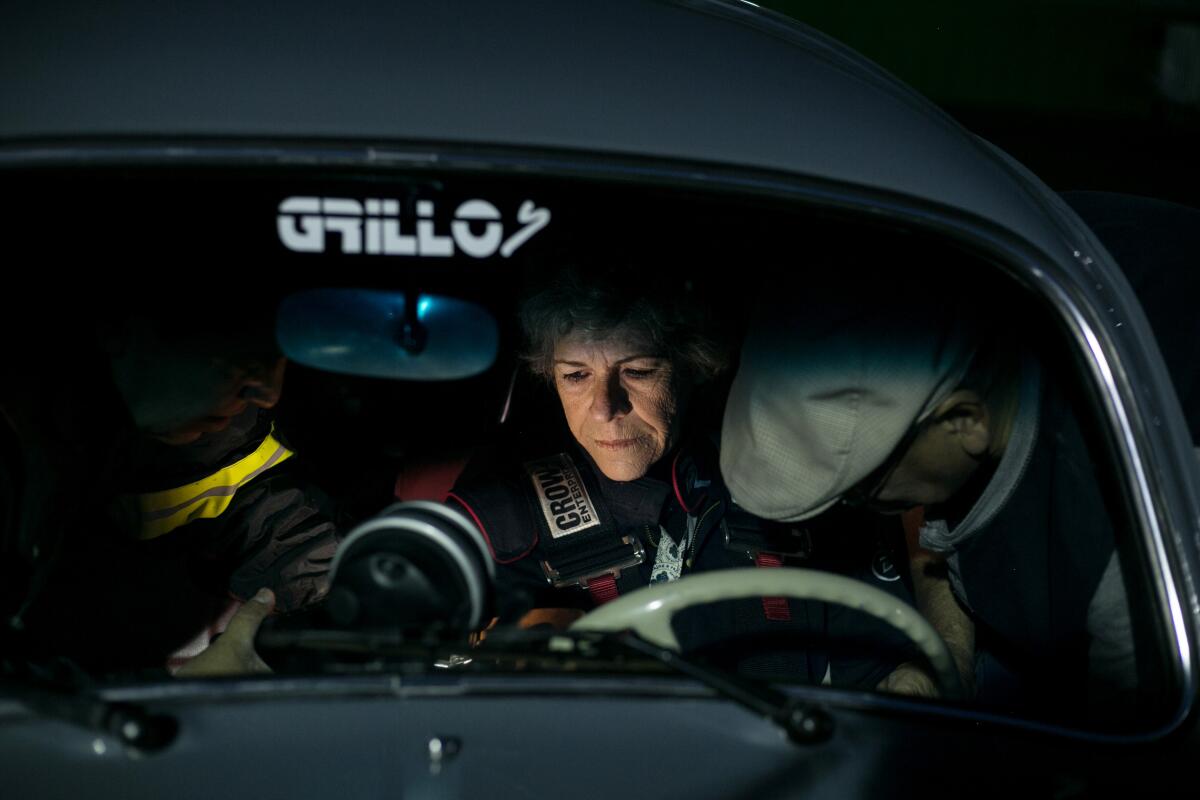
âI like to go fast,â she said.
A few years ago, Gamboa made her a gear shift that says âJannetteâ in pink cursive.
Sometimes they race each other, which both say helps soothe occasional marital frictions. âItâs simple,â Gamboa said. âWhen we race, weâre happy.â
They have a standing bet. If he wins (which is more often), they go out to dinner at a fancy restaurant. If she wins, they go gambling at a nearby casino.
Sometimes after they race, fans demand they kiss.
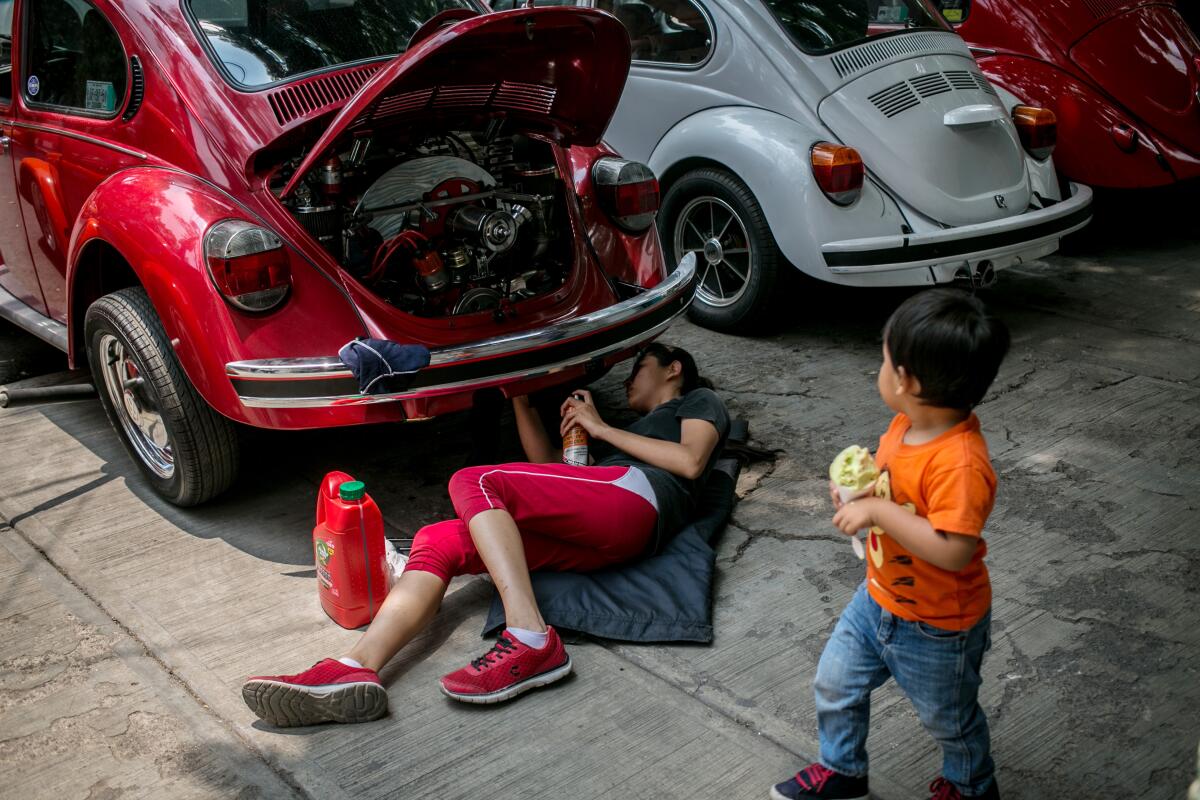
RamĂrez revved her engine, drawing cheers from the crowd of young people lining the drag strip, many of them holding cellphone cameras to record the race. Her opponent, a younger woman in a decked-out VW Golf, revved hers, too.
The starting light turned from yellow to green, and RamĂrez pressed the pedal to the metal, taking off with a heart-rattling roar. Her left hand held the wheel steady while her right hand shifted.
She was moving slower than usual because her normal motor was being worked on, and this was a borrowed engine. Still, she traversed a quarter-mile in a cool 16 seconds â and won.
As she thundered back to the starting line, a crowd of familiar faces converged to congratulate her, including her sons, her sister-in-law and her husbandâs cousin.
A couple of younger employees of the mechanic shop helped her out of the car: Daniela Cruz, who grew up admiring RamĂrez, and Eric MartĂnez, who has a tattoo of a Beetle on his left biceps. The Gamboa clan taught them how to work on Beetles, and now considers them family.
There has always been a thriving scene in Mexico of Beetle lovers, or âvocheros.â For years, a crew of them has gathered at the Gamboasâ house every Wednesday night to eat and geek out over old magazines with names like Vocholandia.
Recently, though, an odd thing has happened. Even as demand for new Beetles has declined â Beetle taxis were phased out in Mexico City in 2012, and Volkswagen stopped manufacturing the original Beetles in Mexico in 2003 â the culture around them seems stronger than ever.
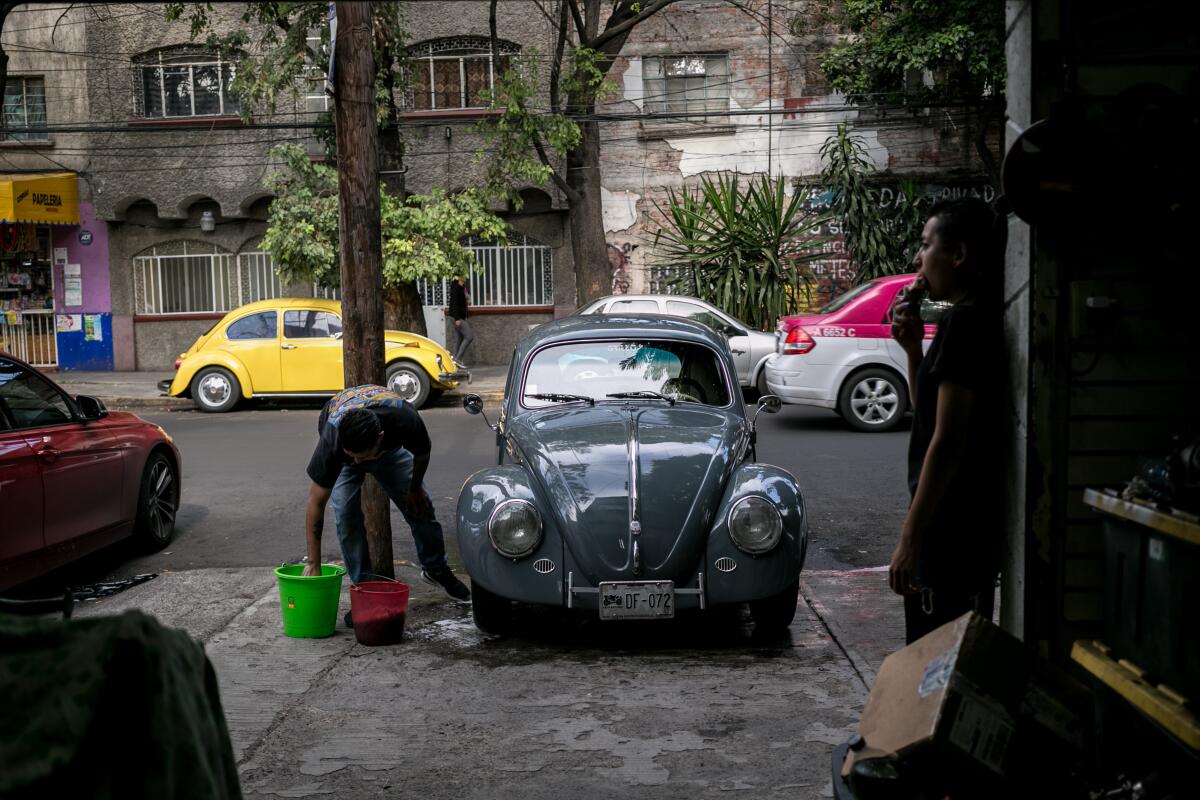
The family helps organize a popular Beetle-only race, called the âBug In,â and an annual event in which more than a thousand Beetles converge for a colorful parade down the streets of the capital.
Business at the shop is booming, Gamboa said. He guesses itâs because people are nostalgic for the past.
One afternoon, Gamboa, his son, and their small crew of assistants were working on several Beetles parked on the sidewalk in front of their shop. Gamboaâs cherry red Bug was there, along with another painted a hue of orange so bright that they called it âEl Habanero.â Just inside hung a big photograph of Adiel, grinning after a race.
The city was bustling. Children in school uniforms ran by, laughing, while workers on their lunch break dashed for a quick taco.
But every few minutes, somebody passing by stopped to admire the cars â transfixed, perhaps, by a glimpse into the past.
More to Read
Sign up for Essential California
The most important California stories and recommendations in your inbox every morning.
You may occasionally receive promotional content from the Los Angeles Times.


